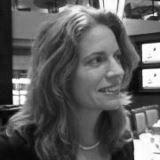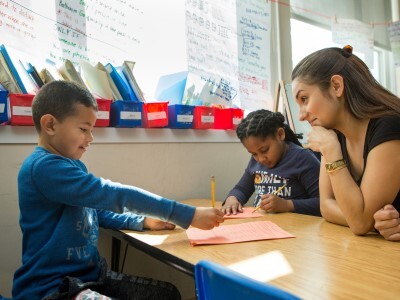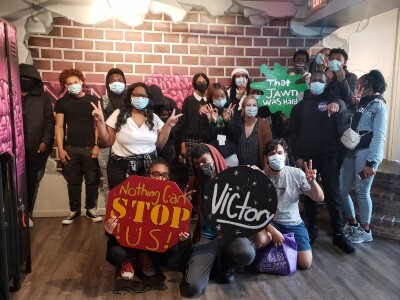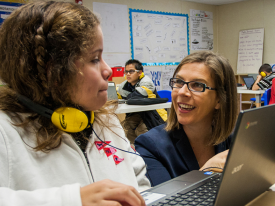Leading and Designing for Equity in Oakland
Topics

Together, educators are doing the reimagining and reinvention work necessary to make true educational equity possible. Student-centered learning advances equity when it values social and emotional growth alongside academic achievement, takes a cultural lens on strengths and competencies, and equips students with the power and skills to address injustice in their schools and communities.
Some bright and colorful blooms are emerging in the Oakland educational ecosystem through an intentional focus on equity.
In our blog series on equity, we’ve periodically featured the work of regional partners. These partners represent the seven regional hubs actively cultivating local learning networks, next gen school designs, and self-directed professional learning communities. In this edition, we allow our gaze to fall upon some bright and colorful blooms maturing in the Oakland ecosystem.
A Seed Is Planted
Greg Klein is Senior Director of Innovation and Learning for the Rogers Family Foundation. Earlier this spring, he shared a vision for equity generated by the Oakland Unified School District (OUSD) and expressed in this Equity Pledge. “There’s a long history here. It’s uplifting...a kind of renewal unfolding,” he said. In our conversation, Greg communicated respect and gratitude for the efforts of the National Equity Project—a longtime local partner. He recalled his first exposure—many years ago as a middle school teacher—to NEP’s leadership coaching approach. “It was one of the most powerful professional learning experiences of my professional career. That experience had a profound effect on how I view my work,” reflected Greg. “It shaped how and why I do what I do today.”
Awareness Takes Root
“Our team was doing on-going work with a designated coach,” Greg explained, “and during that time I gained a deep appreciation for my own privilege. I developed a sense of responsibility for my mindset and choices. I began to understand that we are actors in creating and recreating systems of inequity. Intentional or not. Those systems... be they education, housing, juvenile justice...have compounding negative effects and create challenging disparities for underserved students and their families. It’s systemic oppression. Individual expressions matter a great deal, but the systemic issues are the most damaging and hardest for those benefiting from priviledge to see.”
Listening and Allowing Our Lived Experiences to Grow
“That’s also when I learned the transformative power of listening. Listening, creates space for different voices and narratives to be heard, and for equity to take root,” Greg explained.
Educational equity means that each child receives what he or she needs to develop to his or her full academic and social potential.
-National Equity Project, 2016
NEP offers tools and structured protocols to assist education leaders to design meetings for equity and to support the growth of intentional community. NEP believes that community must be fostered and when it is, it draws on the strengths of each member. That precondition (community) enables teams to perform at their highest levels and to do their best work. Diverse teams that are operating with a supportive and effective culture are more creative and productive which is an obvious benefit. In an educational context, and when developing a shared equity lens, this type of community enables teams to disrupt traditional structural inequalities and transmute or transform them.
According to the NEP, community is built or cultivated intentionally. Using constructivist listening protocols, individuals practice having three or more minutes to share their thoughts and feelings in an uninterrupted format. The listener practices “holding space,” meaning they give their undivided attention to the speaker. There’s no expectation to respond, agree, disagree, interject or solve whatever may be shared during the set time. This style of listening honors personal lived experience as complete and legitimate. It honors the feeling aspects that accompany our thoughts, choices and experience without critiquing, judging or labeling them. It can be healing. It frees the speaker (and listener) to accept what is real for them. It can affirm and empower the speaker as being capable, legitimate, and already positioned to address whatever may arise for them. This feels as simple and subtle as it sounds, but is nonetheless integral to authentic expression and establishing interpersonal connection.
We know how to have deep conversations, but we sometimes have to let go of our modern ways of being in meetings to get past the behaviors that keep us apart. We have cultivated some bad behaviors- speaking too fast, interrupting others, monopolizing the time, giving speeches or pronouncements. Many of us have been rewarded for these behaviors. We’ve become more powerful through their use. But none of them lead to wise thinking or healthy relationships. They only drive us away from each other.
–Margaret Wheatley, Turning to One Another: Simple Conversations to Restore Hope to the Future, 2002
Sprouts, Stems, and Leaves
As a funder, Greg explained, “We invest in school teams and enable exploration and implementation of next gen learning; but our approach is very much about listening and learning directly from the school teams and community partners. My mindset and our collective approach continues to reflect the NEP’s foundational teachings. For example, we’re not prescriptive. We don’t profess to have an answer. We don’t think there’s any one way to do this work. We believe in and trust each team. They are 100% capable of figuring out the inherent challenges, especially when given the time and level of requested support. My job is to listen for the ways I can help which are, of course, different for each team. We’re comfortable with flexibility and customization. We engaged the Mastery Design Collaborative (MDC) with a facilitative role in mind, and to support teams grappling with the deep roots of structural inequality. We intended for MDC to co-create safe working relationships across teams, so there aren’t adverse or unintentional funder dynamics to navigate.”
Blooms, Bees, and Butterflies
Greg shared that the quality of collaboration underway in Oakland makes the work deeply satisfying and extends the ownership in all directions just like the roots of the tree used in the Oakland logo. It seems that agency and ownership are just as important for adult learning communities as they are for students communities.
“We’re excited about the vision and work of next gen schools in Oakland. We believe these teams are charting a course that’s addressing real inequities. We witness both visitors and locals walk into our schools, and register a totally different culture. They’re moved by that experience. It’s not just a feeling of safety, achievement or pride. It’s a sense of connection, respect, and peace. For schools in our larger ecosystem it signals a renewed sense of possibility,” Greg concluded.
Special thanks to the National Equity Project for their commitment, vision, coaching and equity-supporting protocols. The Constructivist Listening Dyad was adapted from the National Coalition for Equity in Education by Victor Cary and available on the School Reform Initiative website.




